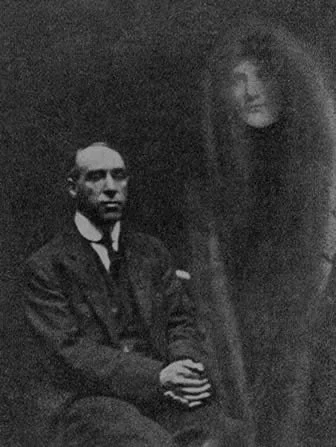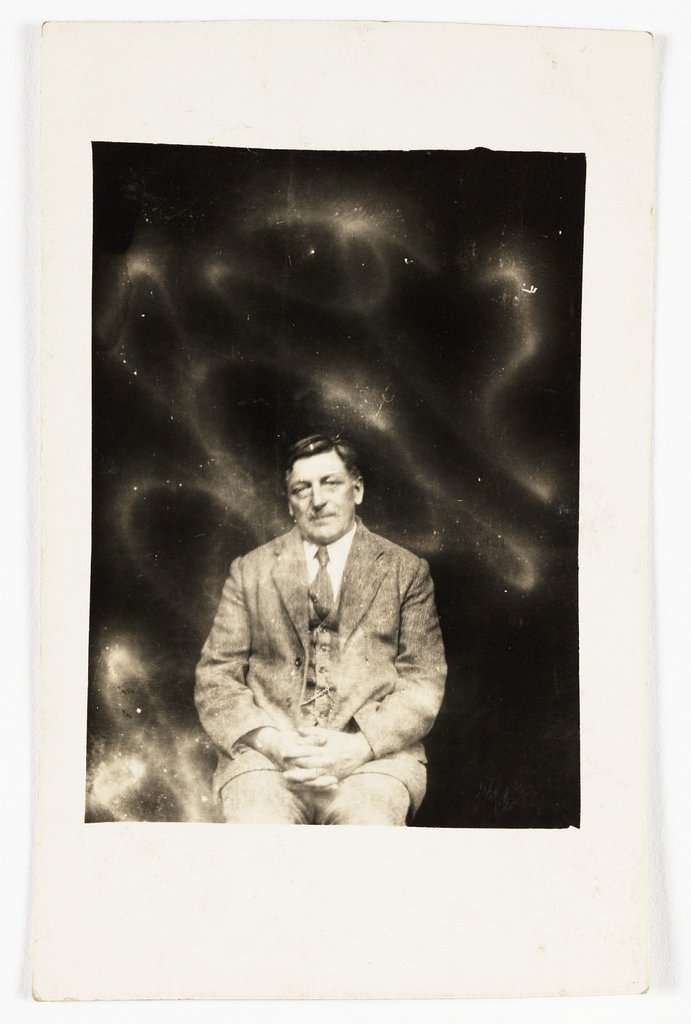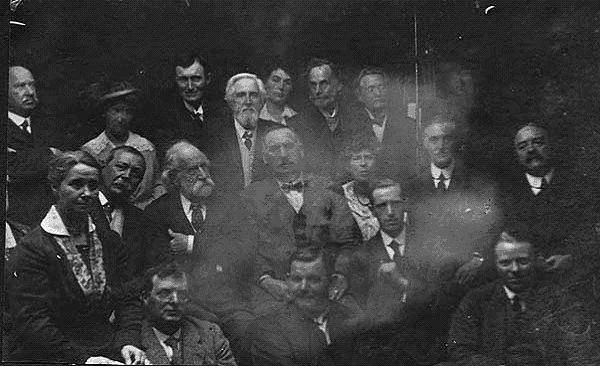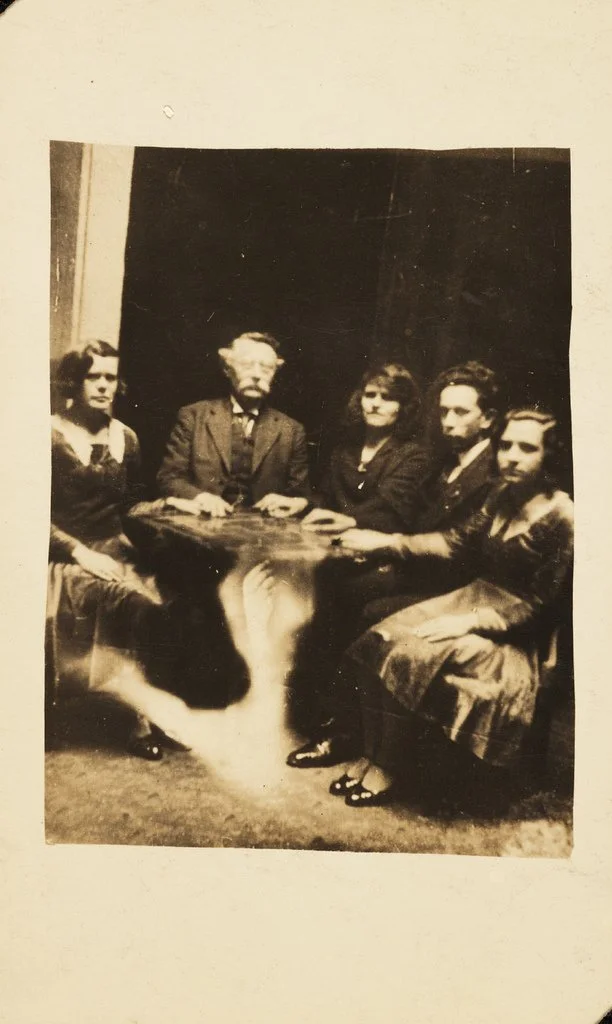The Allure of Spirit Photography
I’ve always been drawn to the supernatural and horror, as a child I was obsessed with folklore and ghost stories and growing up I watched endless horror films. I think part of this fascination started with a large dusty green book in our bookcase, filled with imagery from early horror films, supernatural sighting and unsolved murders, in hindsight I was probably too young to be looking through the book but I was both drawn to it and unnerved by it. It was in this book that I first encountered spirit photography.
Harry Price, and friend. As taken by William Hope
‘Man surrounded by signs of spirit presence’ c.1920, William Hope. © Science Museum Group collection
The goal of Spirit photography is to capture the image of ghosts and other spiritual entities, with the mid-19th century spiritualism movement contributing to its rise in popularity. A notable spirit photographer of the time was William Hope, originally a carpenter, Hope rose to prominence in paranormal circles after claiming to have captured spirits with his camera, the first image reportedly produced in 1905. Following the interest he received in his photography, he soon formed and lead the Crewe Circle Spiritualist Group.
By the 1920s, Hope was beginning to be exposed as a fraud. Edward Bush sent Hope a letter containing a photograph of a living person pretending to be a deceased son. Following a sitting with the photographer, the image produced undoubtedly depicted the same living person in the photograph. There were also reports of the studio being suspiciously dark and plates being switched. Hope produced a spirit photograph of fellow spiritualist William Crookes’ deceased wife, despite obvious signs of a double exposure, Crookes was convinced it was genuine evidence of the paranormal.
The annual meeting of the "Society for the Study of Supernormal Pictures". Including Sir Arthur Conan Doyle and his wife (Center, Left) (1922).
‘A séance’ c.1920, William Hope. © Science Museum Group collection
Spirit Photography was achieved through experimentation with early photography, utilising a combination of long exposures, movement, reflective surfaces, dust particles, lens flare and chemical manipulations resulting in the otherworldly imagery.
Spirit photography thrived on capturing portraits of sitters with their lost loved ones. It’s important to note with photography still being relatively new, most people at the time would not have had a photograph of themselves, let alone a loved one. It was popular to commission portraits of the deceased as a cherished memento, often the only existing image of the loved one. Spirit photography was an extension of this, a chance to connect with the deceased and be captured together one last time.
What are your thoughts on spirit photography? Will you experiment with the techniques this Halloween?
Written by Jasmine Farram
Cover image credit: ‘Elderly couple with prednisone a young female spirit’ c.1920, William Hope. © Science Museum Group collection









